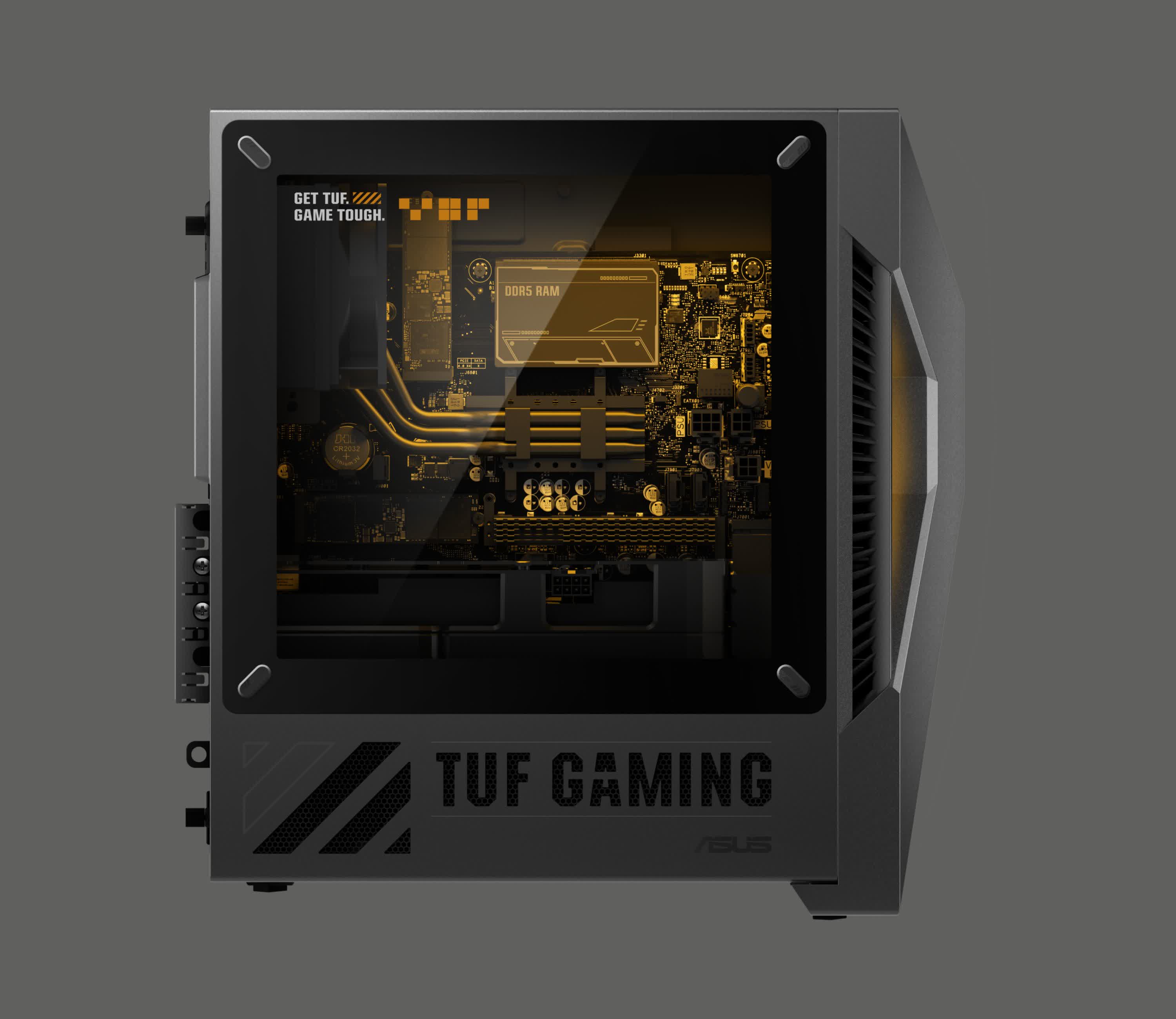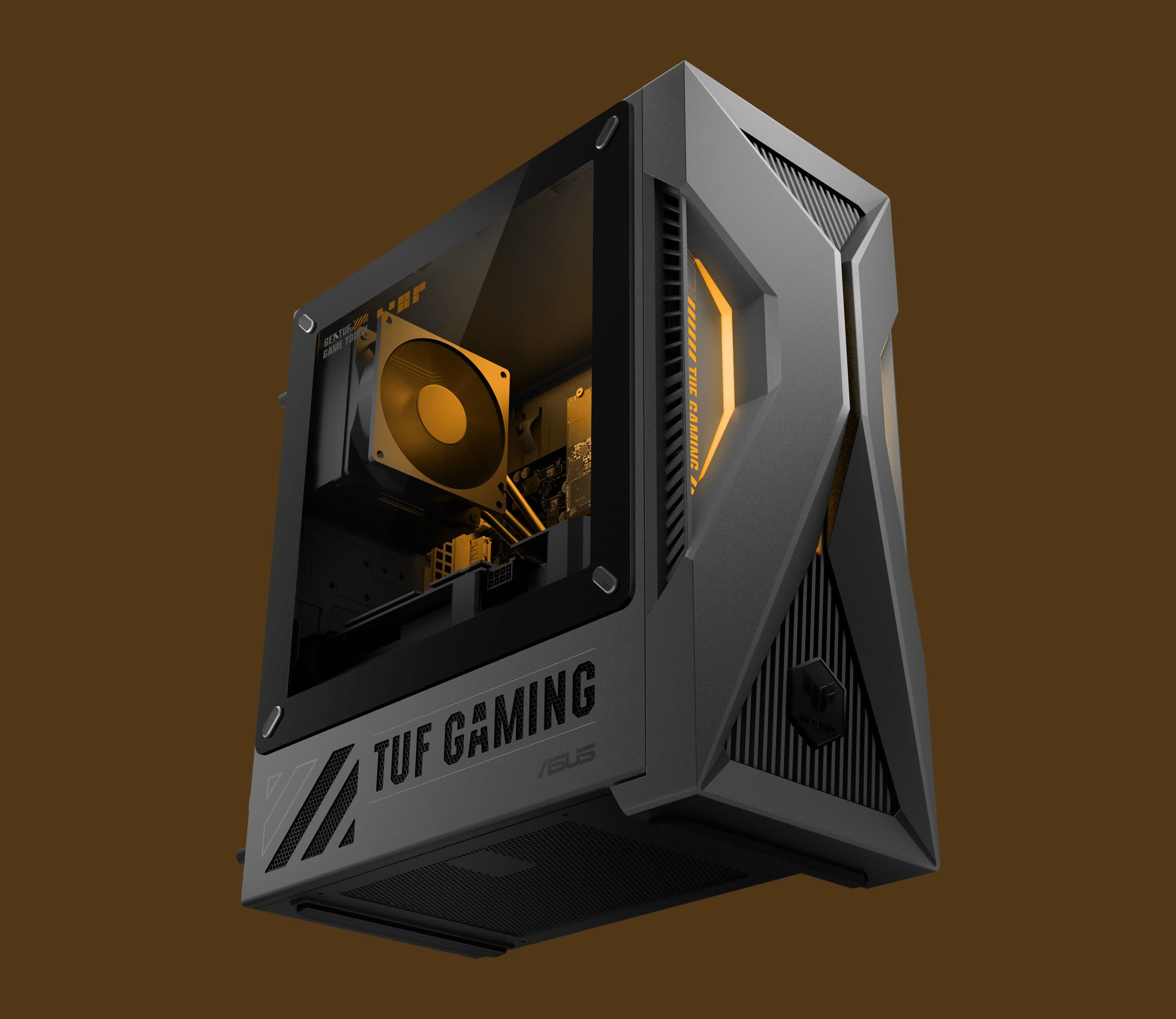Cutting corners: Asus has taken the wraps off its latest compact gaming desktop, the TUF Gaming T500. It may look like your average gaming rig at first, but it bucks the traditional desktop mold by utilizing mobile CPUs rather than their full-sized desktop counterparts.

At the heart of the TUF Gaming T500 is up to an Intel Core i7-13620H processor. This is a 6+4 core CPU with 16 threads and boosted clock speeds reaching 4.9GHz, which should provide plenty of muscle for gaming and multitasking. Asus claims the mobile chip allows for desktop-level gaming performance with much lower temperatures compared to traditional desktops.
Typically, laptop CPUs run hot due to thermal constraints, but the T500's full desktop tower design with improved airflow and cooling should keep the i7-13620H from throttling. Add to that the custom cooling solution with a large 90mm fan, heatsink, and three heat pipes for improved heat dissipation.

On the graphics front, the T500 can be equipped with up to an Nvidia GeForce RTX 5060 Ti desktop GPU. This is a 16GB VRAM graphics card, based on Nvidia's newest Blackwell architecture. It's capable of delivering high frame rates at 1440p gaming and very decent 4K gameplay as long as you turn on DLSS.
Lower spec models are available as well, with options like the RTX 5060 8GB (which we don't recommend), RTX 4060 8GB, or RTX 3050 6GB. These will be paired with up to 64GB of blazing-fast 5200 MHz DDR5 memory and up to 2TB of PCIe 4.0 NVMe SSD storage.
On the outside, the T500 chassis is quite the looker and takes design cues from mecha anime with its bold, futuristic aesthetic. Models are available with either a tempered glass or solid metal side panel, both accented by customizable RGB lighting.
As for the I/O upfront, you get USB-C and USB-A ports, while the rear has additional USB 2.0 ports, video outputs, Ethernet, and audio jacks. Meanwhile, connectivity comes by way of Wi-Fi 6 and Bluetooth 5.4. Asus has built the T500 to withstand "harsh conditions," meeting MIL-STD-810H standards for durability against drops, extreme temperatures, altitude exposure, and vibrations. An unusual if interesting feature addition for a gaming desktop, should we say.
All in all, the TUF Gaming T500 seems well-suited for gamers who prioritize space savings or low power usage without skimping on performance. Pricing specific to each variant has not been announced, but the product page does quote a (somewhat ambiguous) $1,299 which might be a starting price.
The Asus TUF Gaming T500 is a mobile CPU-powered desktop for better thermals